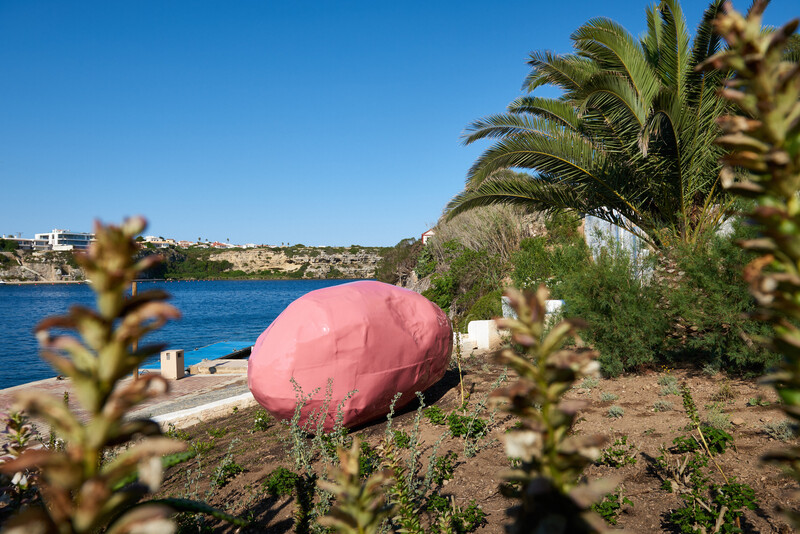Outdoor sculpture trail at Hauser & Wirth Menorca

Franz West, Autostat, 1996 © Archiv Franz West © Estate Franz West Private collection. Courtesy Hauser & Wirth. Photo: Daniel Schäfer
Outdoor sculpture trail at Hauser & Wirth Menorca
1 January 1970
The outdoor sculpture trail at Hauser & Wirth Menorca features six works by prominent 20th century European artists. Alongside the gallery buildings, integrating with the landscape of Illa del Rei, works by Spanish masters Joan Miró and Eduardo Chillida feature along with landmark sculptures by Louise Bourgeois and Franz West.
Franz West’s pink ellipsoid ‘Autostat’ (1996) welcomes visitors on the main deck. Pink is a recurrent colour in West’s work, which, in the context of an open-air setting, creates a startling contrast between nature and the manmade. Referencing the human body, its bright hue is offset by the irregularities of its scar-like welded seams, suggesting both the organic and the artificial.

Joan Miró, Le Père Ubu, 1974 © Successió Miró / VEGAP, 2021. Private collection. Courtesy Hauser & Wirth. Photo: Daniel Schäfer
In the midst of Piet Oudolf’s garden is Miró’s ‘Le Père Ubu’ (1974). The bronze sculpture celebrates the popular character of Alfred Jerry’s 1896 satirical theatre piece, a highly influential play for the Surrealist movement. In Miró’s elegant sculpture of reduced forms, the smooth dark patina unveils a bulbous nose, cartoonish eyes and a mere three hairs emerging from Ubu’s scalp.

Eduardo Chillida, Elogio del vacío VI, 2000 © Zabalaga Leku. San Sebastián, VEGAP, 2021. Collection The Estate of Eduardo Chillida. Courtesy Hauser & Wirth. Photo: Daniel Schäfer
Eduardo Chillida’s ‘Elogio del Vacío VI’ (2000) is an ode to a major leitmotif in the sculptor’s oeuvre: space, and the shaping of form. For Chillida, space refers not to volume, but to the dynamic space of the void. Placed at the intersection between the gallery’s main entrance, ‘Cantina’ and the hospital building, the interlocked tentacular arms give shape to a void, creating interesting apertures and an interplay between light and shadow.

Eduardo Chillida, Escuchando a la piedra III, 1996 © Zabalaga Leku. San Sebastián, VEGAP, 2021. Collection The Estate of Eduardo Chillida. Courtesy Hauser & Wirth, Photo: Daniel Schäfer
Throughout his illustrious career, Chillida reinterpreted the modernist dialectic of solid versus void, with equal parts of material reflection and philosophy. Placed at the end of the wild-olive tree forest, ‘Escuchando a la Piedra III’ (1996, ‘listening to the stone’ in Spanish) is carved from an oblong block of granite. The impenetrability of the material results in a dialogue between sculptor and stone, in which Chillida has removed just enough to reveal the form and emphasise the rock's natural character.

Louise Bourgeois, Spider, 1994 © The Easton Foundation/VAGA at ARS, NY and DACS, London 2021. Photo: Daniel Schäfer
One of the first large scale works from Bourgeois’s revered series, the ‘Spider’ (1994) juts out from the central patio. Eight slender, knobbly legs support an irregularly ribbed body that protects a gleaming granite egg. A recurrent motif in the artists’ career, the spider serves as an ode to her mother, who was a tapestry weaver. Both a predator and a protector, a threat and a repairer, the symbol evokes the emotional entanglements of her own childhood. The roots of Bourgeois’ work can be traced to her own life, but her works convey universal themes of emotion, anxiety and longing.
Resources
1 / 10









